Not just there for life’s darker moments, a flashgun can make a massive difference to the quality of lighting, even under the midday sun. Indeed, they’re particularly useful for softening or eliminating unsightly shadows in sunny-day portraits. However, whether you’re shooting against a backdrop of night-time city lights, stepping indoors for some interior shots, or competing with the beaming sun, successful flash photography is all about creating a balance.
Trying to work out how much flash power you need in any given situation used to demand some mental (and sometimes maddening) arithmetic. Nowadays, thanks to TTL (Through The Lens) flash metering, your camera can team up with a dedicated flashgun to strike a great balance between exposing for ambient light, and applying regular TTL flash metering, this takes more account of ambient lighting levels. Indeed, TTL-BL is the default flash mode for most of Nikon’s recent flashguns, and is available in all models in this group apart from the Gloxy and Phottix, which only give the option for regular TTL metering.
The most direct flash route is to slide your flashgun into your camera’s hotshoe, point and shoot. This can yield decent results, but images tend to have a two-dimensional ‘snapshot’ look. All the flashguns on test have bounce and swivel heads, enabling you to fire the flash at a wall or ceiling instead of directly at the subject. When reflected off a large white surface like a wall, the size of the light source effectively becomes very much bigger. This generates a much softer quality of light that’s much more flattering for portraiture.
You can also get much better results by using your flashgun off-camera. The traditional way to do this is to use a flash extension cord which links the flashgun to the camera’s hotshoe via a stretchable curly cable. However, most current flashguns have wireless communications built in, so they can operate in master or slave modes for multi-flashgun set-ups.
A down side of bounce flash, especially in areas with very high ceilings or distant walls, is that the light from the flash has to travel a lot further. The intensity of light drops off according to the inverse square law (here comes that maths again), which basically means that if you double the distance you only get a quarter of the light. You can therefore find your flashgun coming up short on available power if you try to bounce the light too far.
For direct flash, at least, all the flashguns on test apart from the Nikon SB-500 have the advantage of an automatic, motorised zoom head. This means they narrow the flash beam to keep in step with longer zoom settings or when changing to a lens with a longer focal length, typically over a range of 24-105mm (FX cameras), or 16-70mm (DX). After all, there’s no point wasting power illuminating a wide area if you’re only shooting a narrow area with a telephoto lens.
10 things we learned

1. On the button
Not just for raising the pop-up flash, the flash button also enables you to select different flash modes, using either the pop-up flash or an external flashgun.
2. Red-eye reduction
This uses a burst of pre-flash light to narrow the pupils of your subject, which will reduce or eliminate the red-eye effect that can spoil flashlit portraits.
3. Slow sync flash
With slow sync flash, flash is used at a slow shutter speed to give a better balance between flashlit subjects and dark backgrounds, or to freeze movement in low light.
4. Rear-curtain sync
Select this option and the flash fires at the end of the exposure instead of the beginning. It’s useful when you want to freeze the action at the end of a long exposure.
5. Auto FP
This is a ‘high speed sync’ flash mode, which enables the flashgun to be used at fast shutter speeds, albeit with a lower maximum flash power being available.
6. Repeating flash
Available in some flashguns as well as the pop-up flash of some upmarket D-SLRs, this programmable mode gives a stroboscopic effect during long exposures.
7. Diffusion dome
Some flashguns come with a diffusion dome, or you can buy one separately. They’re great for softening the light and creating a mix of direct and bounced flash.
8. Command module
The pop-up flash in most upmarket D-SLRs, such as the D7200, can be used as a wireless commander for triggering compatible remote flashguns in slave mode.
9. Spot on
To switch from TTL-BL (Balanced Light) to regular TTL mode (which takes less account of ambient lighting conditions), you often need to switch to the camera’s spot metering mode.
10. Faster recycling
NiMH (nickel-metal hydride) batteries generally enable faster recycling speeds than alkaline batteries, especially after a high-power flash discharge.
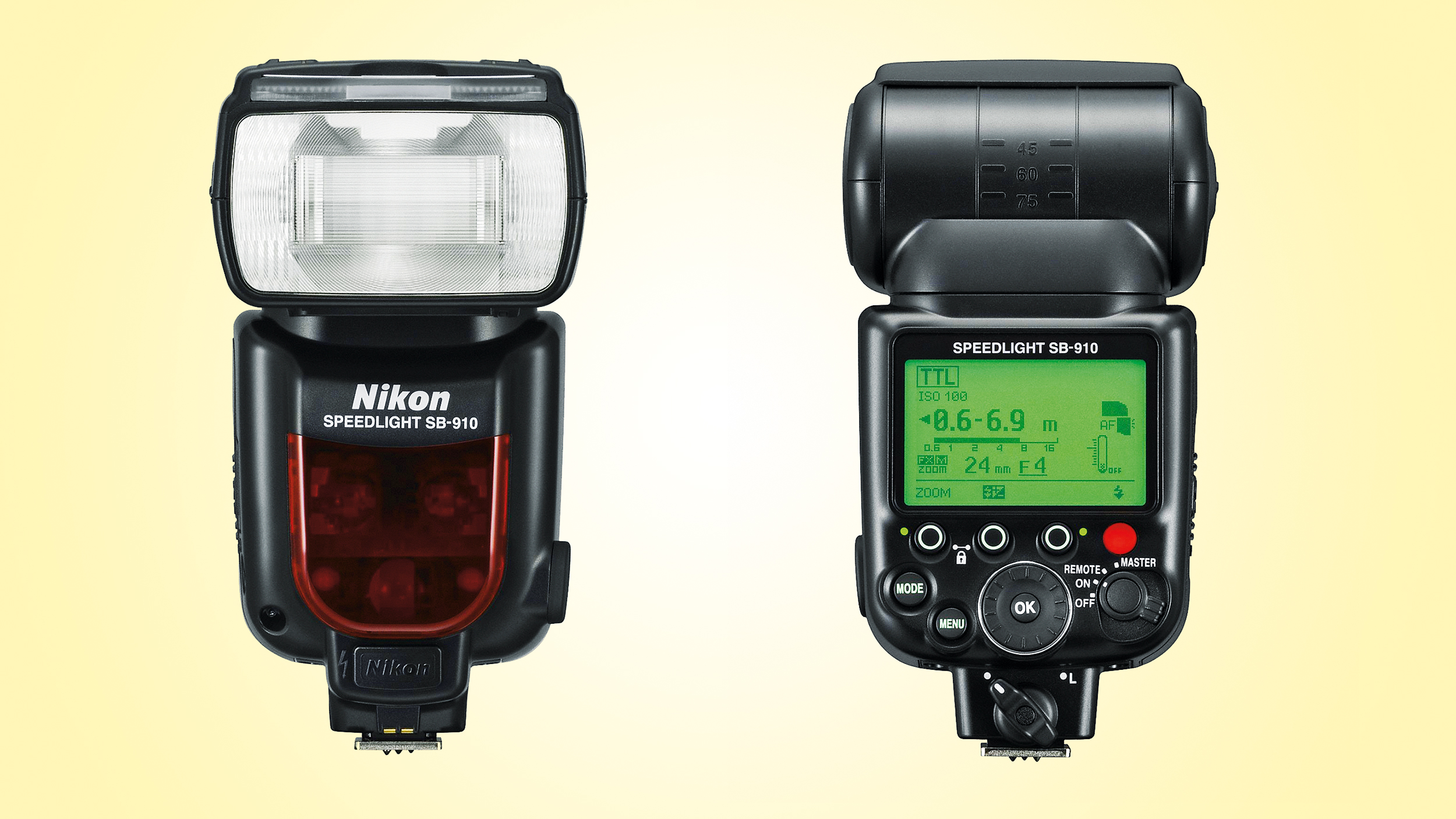
Look out for these key features when buying a flashgun. A wider range of features will expand your shooting options.
Wide-angle diffuser
Many flashguns have a wide-angle diffuser panel to spread coverage when using ultra-wide angle lenses, and a reflector card for directing some light forwards in upright bounce mode.
Master/slave modes
Advanced flashguns can often be used as either master or slave units in multi-flashgun lighting setups, enabling you to get more exotic lighting effects.
AF illuminator
A patterned grid of light, usually red in color, enables the camera's autofocus system to lock on to targets accurately, even in very dark conditions.
Zoom zoom
The most common motorised zoom range is 24 to 105mm but some stretch a little further.
Bounce and swivel head
This enables you to bounce light from the flashgun off walls and ceilings for a softer lighting effect. It's most useful for portraiture. A bounce range of between 0 and 90 degrees (horizontal to vertical) is usually available, and some flashguns add a -7 or -9 degree downward-slanting option for close-ups.
Light tube
The flash tube fires a very bright pulse of light for a split second. The maximum available output is quoted as a Guide number.
LCD panel
An illuminated LCD info panel is useful for displaying important flash settings, or for arranging custom functions. The Metz flashguns on test go even further, with mono or color touchscreens.
Control panel
On-board controls tend to comprise an array of buttons and dials. With the Nikon SB-500, however, adjustments need to be made via the camera.
Flash stand
This lets you position your flash wherever you like while keeping your hands free, and means you don't need a bulky lighting stand.
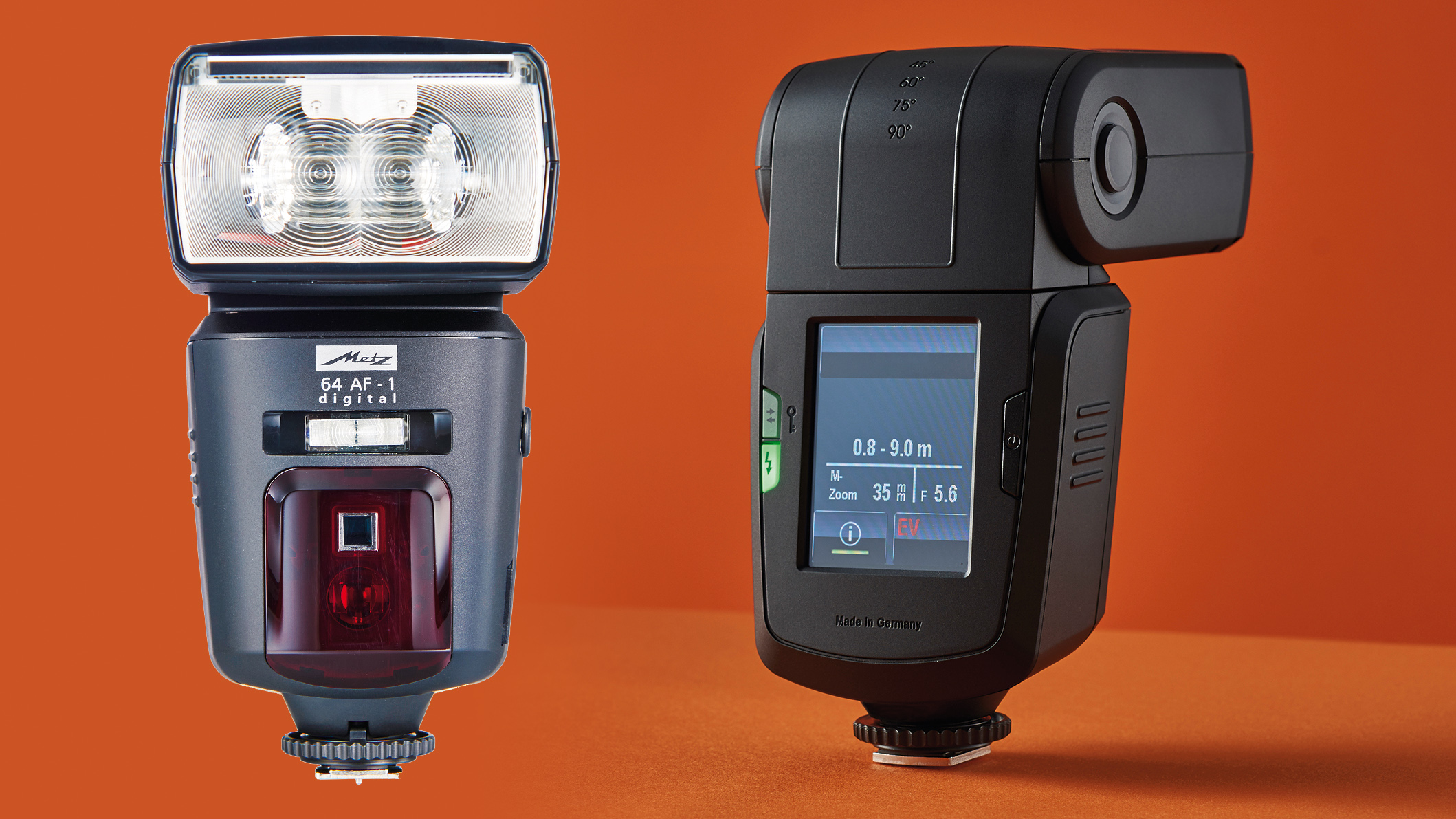
One of Metz’s flagship flashguns, this model has professional-level enticements including a Gn 64 power rating, 24mm to 200mm motorised zoom range, -9 to 90-degree bounce and all the flash modes you could possibly want, including a programmable repeat mode. Everything’s accessible via an oversized color touchscreen. Other pro-level features include a sync terminal and a power input socket – the latter for attaching an optional external power pack. A neat extra feature is a secondary flash tube, which is great for adding a little direct flash when you’re using the main flash head in bounce or swivel mode. Overall performance was excellent, matching the flashgun’s professional-grade aspirations.
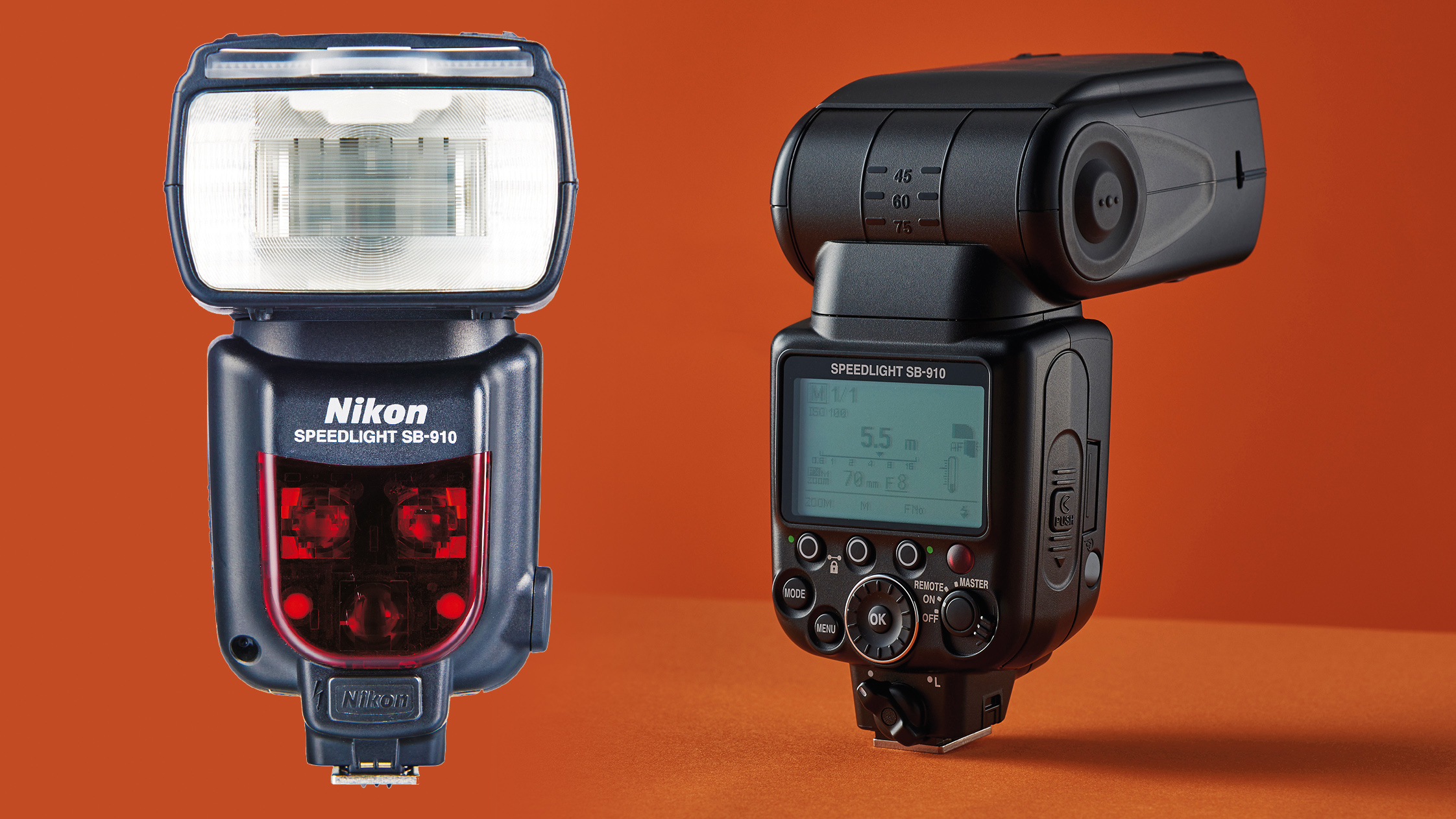
Nikon’s top-flight flashgun (until the arrival of the SB-5000), the SB-910 features three illumination patterns (standard, even and centre-weighted), and a visual indicator on the LCD screen for flash tube temperature. It also comes with a diffusion dome and colour filters, and can detect when they’re attached to the flashgun. Pro-grade additions include a sync terminal and power input socket for an optional external battery pack, greater output power and a programmable repeat mode. The control panel uses a set of context-sensitive buttons for intuitive adjustments of modes, including easy switching between TTL and TTL-BL modes. The tested maximum output power of the SB-910 was only slightly higher than from the SB-700 and TTL accuracy wasn’t as accurate. Recycling speed was slightly slower. The extra features are certainly nice to have though.

The SB-700 boasts -7 to 90-degree bounce, full 180-degree swivel in both directions, a 24mm to 120mm motorised zoom and full wireless master and slave modes. The usual wide-angle diffuser and reflector card are built into the head, and the flashgun is supplied complete with a diffusion dome and colour filters. Cleverly, the SB-700 is also able to automatically detect when the dome or filters have been fitted. Considering the level of sophistication in most areas, it’s surprising that you still need to select the host camera’s spot metering function to enable TTL instead of TTL-BL flash mode. Less surprising, given the relatively inexpensive price tag, is that there’s no ‘repeat’ flash mode. TTL metering was accurate, and the SB-700 exceeded expectations for its maximum power output, while recycling speed was super-swift as well.

Instead of featuring lots of buttons that could be hard to use or even to see in the dark, the Metz has a touchscreen. You can therefore simply poke your way around the flashgun’s extensive menu, making it quick and easy to access the settings you want to alter. As this is a reasonably low-budget option, it lacks a programmable stroboscopic mode, but it does feature full wireless master and slave functions, which are compatible with Nikon’s Creative Lighting System. The maximum power output of the 52 AF-1 fell some way short of its quoted Guide number of 52, and this time TTL metering was a bit on the bright side. We also found recycling speeds were a little pedestrian. Even so, it’s good value, and the touchscreen is perfect for quickly accessing advanced settings.
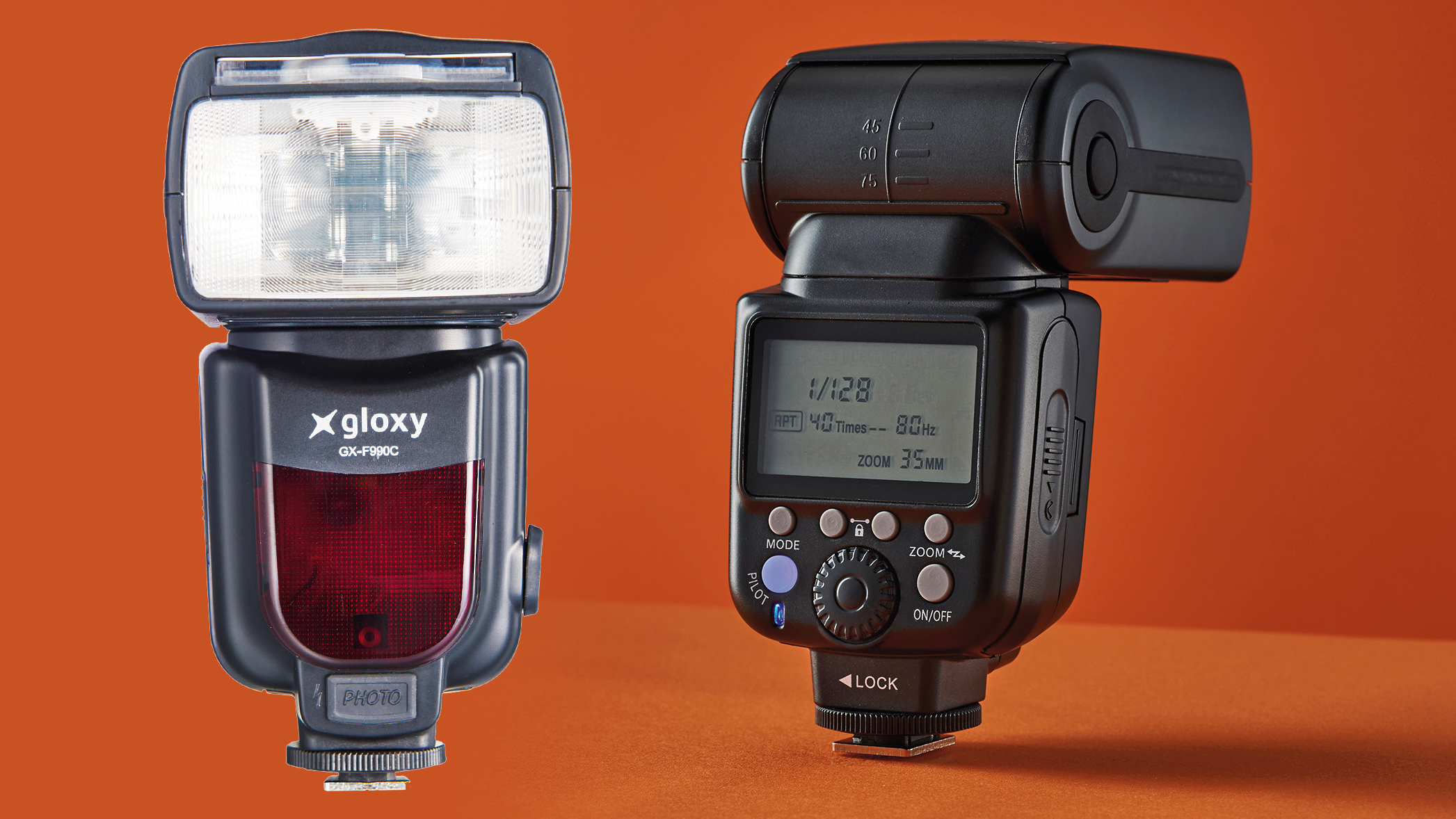
The Gloxy is a disarmingly inexpensive flashgun, yet has an impressive range of advanced features, including an 18mm to 180mm motorised zoom head and programmable repeat mode – the latter being practically unheard of in such a ‘budget’ flashgun. The maximum power rating of Gn 54 is pretty good and the control panel is logical and easy to use. Build quality feels good, too. The only real disappointment is that there’s no wireless master or slave mode, so TTL metering isn’t available if the flash is taken off-camera. There is a more basic optical slave mode, which senses the output from a pop-up flash or another flash, and fires the flash at the power that’s been set manually. Recycle speeds proved to be pretty brisk, even after a full-power flash, but the maximum output was a little disappointing compared with the claimed values. We also feel that TTL accuracy could be better as there was slight under-exposure.
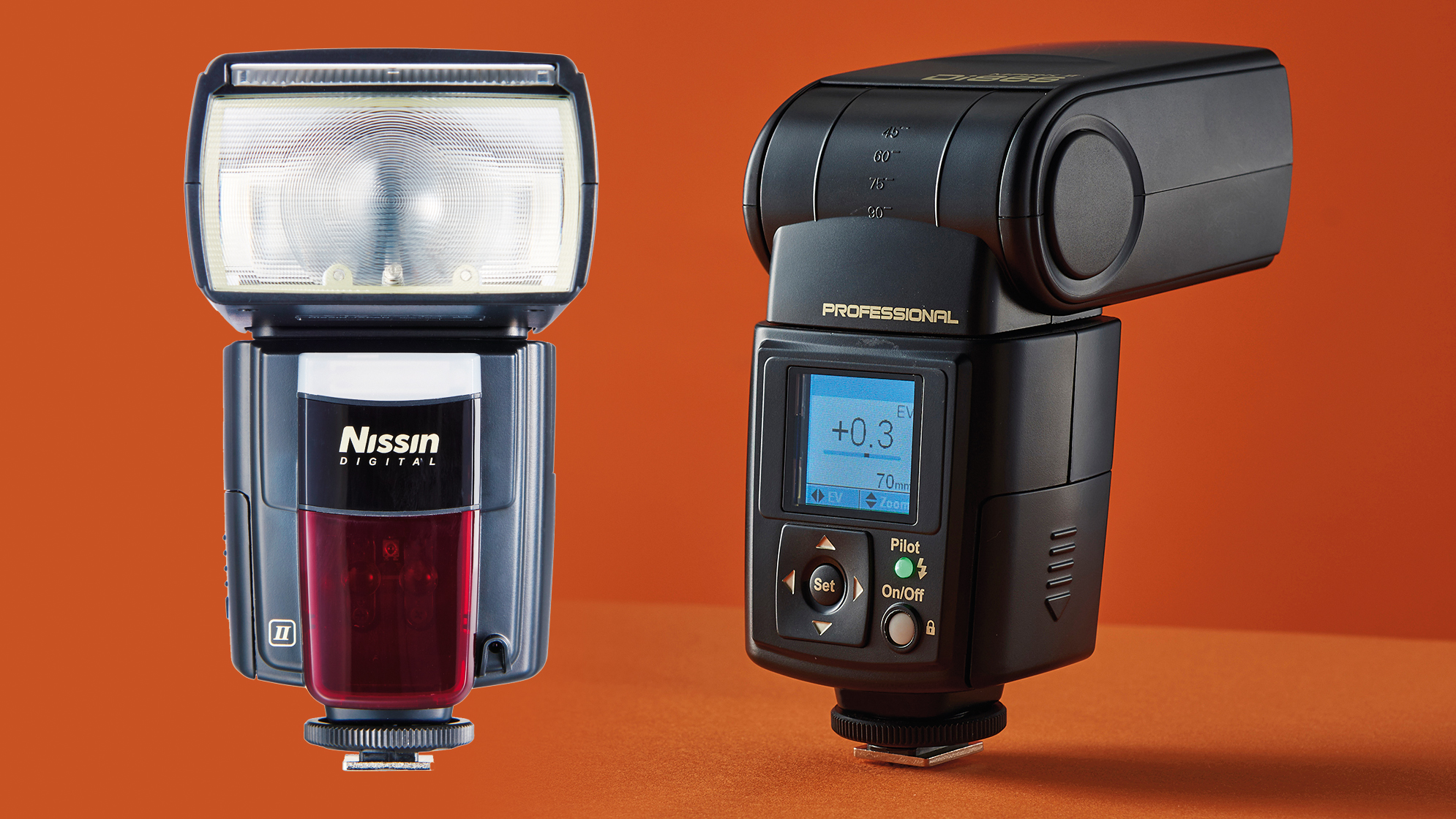
Professional by name, the Nissin is mostly professional by nature as well. It has a full set of advanced flash modes including programmable repeat; a sync terminal; external battery pack socket; solid build quality; and some smart extras. There’s a color LCD screen around the back, and the display rotates automatically depending on whether you’re shooting in landscape or portrait orientation. As you’d expect, the Nissin also supports full wireless master/slave functions. Compared with other ‘pro’ flashguns, the motorised zoom has a relatively limited range of 24mm to 105mm, but the maximum power rating of Gn 60 looks impressive, at least on paper. In our tests, the maximum power output and TTL flash accuracy were both disappointing, and the recycling speed was sluggish. Ultimately, the upmarket feature set looks amazing at the price, but performance proves to be rather more average.
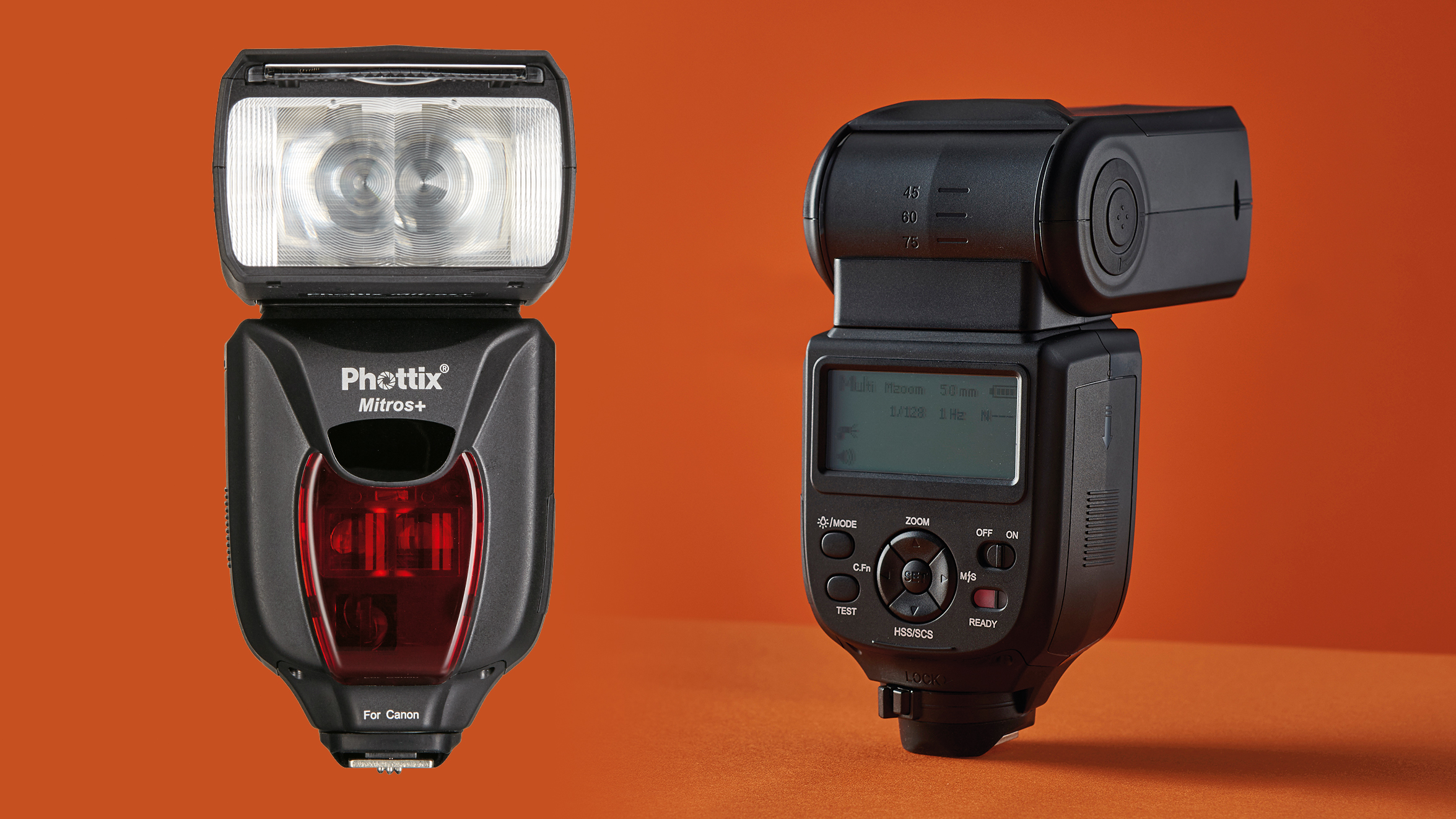
There’s plenty to get excited about in this flashgun, with its high-end features that include a full range of flash modes – programmable repeat among them. Build quality is excellent, pro-grade additions include a sync terminal and external power sockets, and the flashgun comes with a diffusion dome. Wireless connectivity gets a real boost with the inclusion of a built-in RF (Radio Frequency) TTL transceiver. This enables remote triggering of multiple master and slave flashguns without the need for a ‘line of sight’ optical path. The control panel is also easy to use, thanks to a four-way pad that’s particularly intuitive. The Phottix is one of the most powerful flashguns in the group but TTL accuracy was poor, with a tendency towards noticeable over-exposure – and there’s no TTL-BL mode. We found it’s best to permanently apply negative flash exposure compensation. Apart from that, performance was very good.
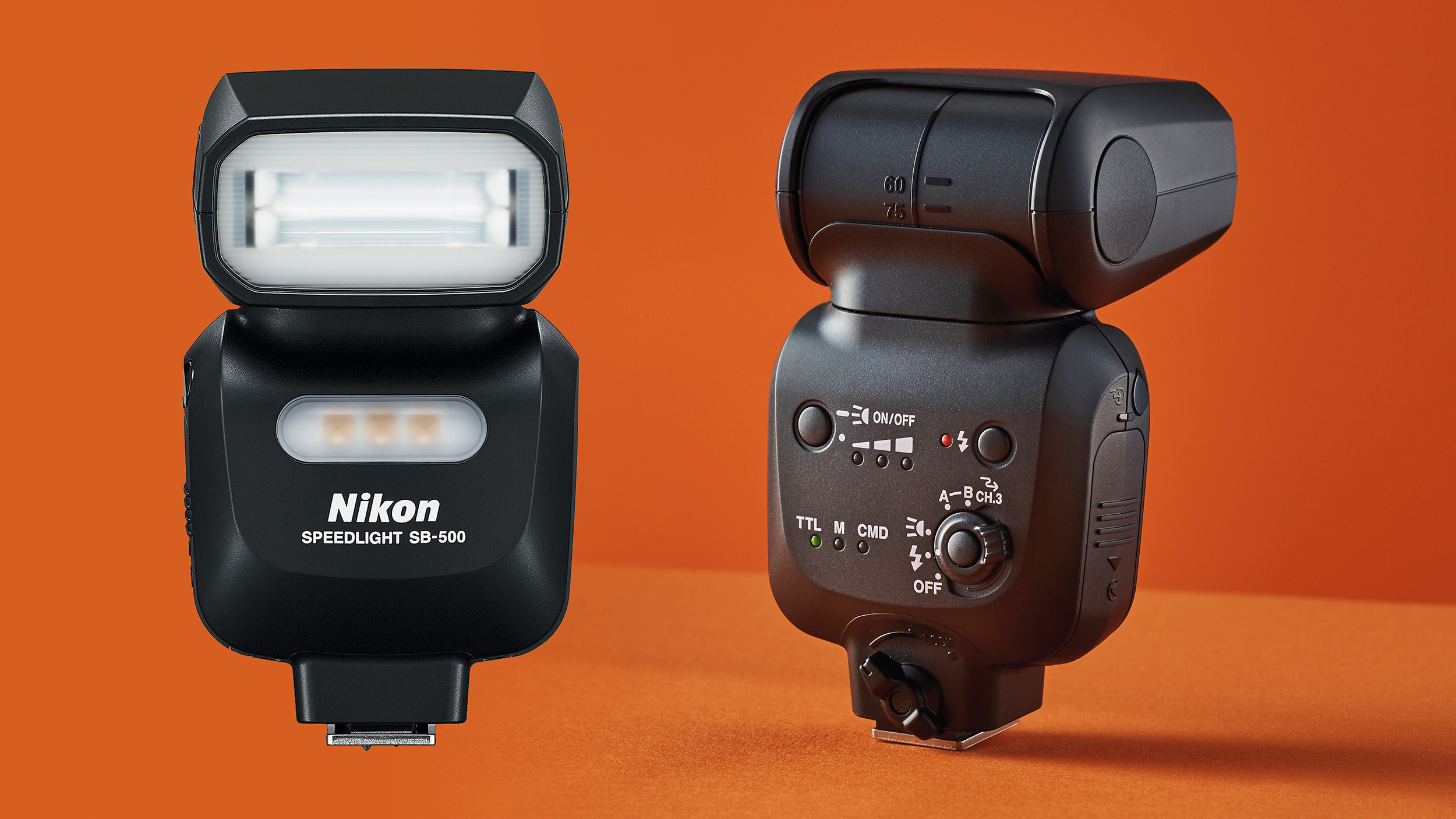
Quite a bare-bones affair, the SB-500 is the only flashgun in the group to lack both an LCD info screen and a zoom feature. It also has a relatively low Gn (24), and runs on just two AA batteries instead of the usual four. Pretty much all adjustments need to be made via the host camera, and compatibility is limited with some older D-SLRs. One positive is that the SB-500 is the only flashgun in the group to feature a constant LED light as well as a flash. This is good news if you spend a lot of time shooting close-up stills and movies. In flash mode, you can use the SB-500 in wireless slave mode (Channel 3 only), or as a wireless commander, but only with Nikon’s latest D5500, D7200, D750 and D810 cameras. Despite its modest power rating, in our tests the SB-500 matched the Nikon SB-700 at its 24mm zoom setting. We also found TTL accuracy was spot on, meaning you won’t need to fuss with exposure compensation, but recycling speed is the outright slowest in the group.